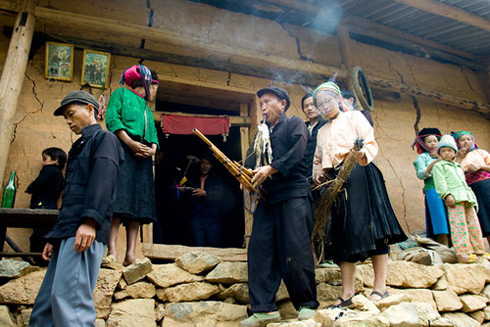Various rituals to pay homage to the deceased have been held in Vietnam for centuries.
Hue City in central Thua Thien- Hue Province has long been known for a ritual to pay homage to the deceased soldiers and civilians who perished in a battle some 129 years ago.
The tribute typically occurs during the last week of the fifth month in the lunar calendar.
Hue City, the country’s capital under the Nguyen Dynasty (1802-1945), was seized by French colonists in 1885.
Some thousands of soldiers and locals were killed by bombs or during stampedes while citizens attempted to escape the bombarded area.
According to historical texts, the streets of Hue were riddled with dead bodies, particularly within the Hue Royal Palace.
Many of the bodies, which were unclaimed by their families, were buried collectively by locals right at the spot where they were killed.
The remains were later moved into collective graves in the vicinity of Hue City. Temples were built to pay tribute to unclaimed, wandering spirits.
Locals can choose to hold the tribute in one day or throughout the entire week. The amount of food offered also depends on a households’ financial situation.
Trays of offerings are typically placed in a doorway or in the middle of a yard. The trays include incense, betel nuts, traditional wine, fruit, and a boiled chicken.
Communities living near the temples also gather to make offerings. State-owned agencies also hold tributes on the occasion.
Mong ethnic minority people’s tribute to the dead
Mong ethnic minority people in northern Vietnam’s Ha Giang Province traditionally hold a “ma kho” (dried ghost) ceremony to bid a final farewell to their deceased relatives one year after they pass away.
The ceremony aims to seek redemption and salvation for the deceased and to express one’s love for their lost relatives.
The symbolic “dried ghost” is comprised of a tray of “men men” (a staple of the Mong people made from corn), boiled pork, a rice cookie, and a young bamboo frame. On top of the frame is one of the deceased’s pieces of old clothing.
The “dried ghost” is placed in the middle of their homes so that relatives and neighbors can visit them before they are taken to the field in a procession.
After seeking permission from the “dried ghost” that they “agree” to leave the house, the procession begins.
Relatives and neighbors form a long queue to see the “dried ghost” off at their grave before tossing them into the air, which signifies that the deceased has finally found their way to heaven.
Like us on Facebook or follow us on Twitter to get the latest news about Vietnam!


















































